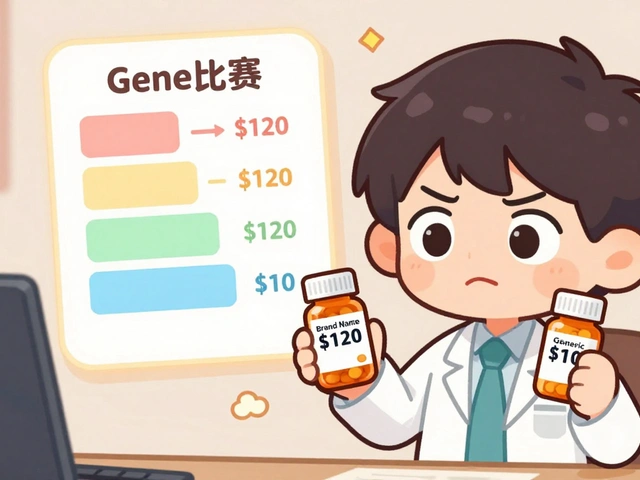Tamsulosin: What It Is, How It Works, and What to Expect
When working with Tamsulosin, a selective alpha‑1 adrenergic blocker used to ease urinary problems linked to an enlarged prostate. Also known as Flomax, it targets smooth‑muscle contractions in the prostate and bladder neck, helping men breathe easier when they need to go. This drug Tamsulosin is part of the broader class of alpha‑1 blockers, which relax vascular and prostate smooth muscle. By doing so, it directly addresses the root cause of many urinary symptoms.
Key Points About Tamsulosin and Related Conditions
If you’ve been prescribed Tamsulosin, you’re likely dealing with Benign Prostatic Hyperplasia, often shortened to BPH. BPH is a non‑cancerous growth of the prostate that can squeeze the urethra, leading to frequent urges, weak streams, and nighttime trips to the bathroom. The relationship is clear: Tamsulosin treats urinary symptoms caused by BPH. The drug’s mechanism—blocking alpha‑1 receptors—reduces muscle tone in the prostate and bladder neck, which lowers resistance to urine flow. That’s why doctors often start patients on a low dose, usually 0.4 mg once daily, and may later increase to 0.8 mg if needed.
Side effects are generally mild but worth knowing. Common complaints include dizziness, especially when standing up quickly, because the drug can also affect blood vessels. Some men notice a drop in semen volume or a brief episode of retrograde ejaculation—where semen enters the bladder instead of exiting. Rarely, users experience allergic reactions or prolonged low blood pressure. Keeping track of these symptoms helps you and your doctor balance benefits against risks. Remember, proper dosage of Tamsulosin reduces the chance of serious side effects, so never adjust the dose without medical guidance.
Beyond BPH, Tamsulosin can be useful in other scenarios that involve smooth‑muscle spasm, such as certain cases of kidney stone passage, where the drug helps relax ureteral muscles and may ease stone movement. However, it’s not a cure for infections or cancers; it merely eases the flow. Interactions matter, too—avoid taking other medicines that lower blood pressure, like certain antihypertensives, and tell your pharmacist about any over‑the‑counter supplements. Alcohol can amplify dizziness, so limit intake if you’re prone to feeling light‑headed.
When you start therapy, expect a short adjustment period. Many men notice a reduction in nighttime trips within a week and smoother streams within a month. Regular follow‑ups let your doctor monitor prostate size, urine flow rates, and any side effects. If Tamsulosin isn’t enough, doctors might add a 5‑alpha‑reductase inhibitor (like finasteride) or consider minimally invasive procedures. Understanding that alpha‑1 blockers reduce prostate smooth muscle tone, while 5‑alpha‑reductase inhibitors shrink the gland itself helps you see why combination therapy can be effective.
Below you’ll find a curated set of articles that dive deeper into related medicines, dosage guides, safety tips, and real‑world experiences. Whether you’re new to Tamsulosin, looking to fine‑tune your regimen, or just curious about how it stacks up against other treatments, the collection offers practical insights you can act on right away.
Flomax (Tamsulosin) vs. Alternative BPH Medications: A Comparison Guide

A detailed side‑by‑side comparison of Flomax (tamsulosin) and its main alternatives, covering effectiveness, costs, side effects, and who should choose each option.
read more



